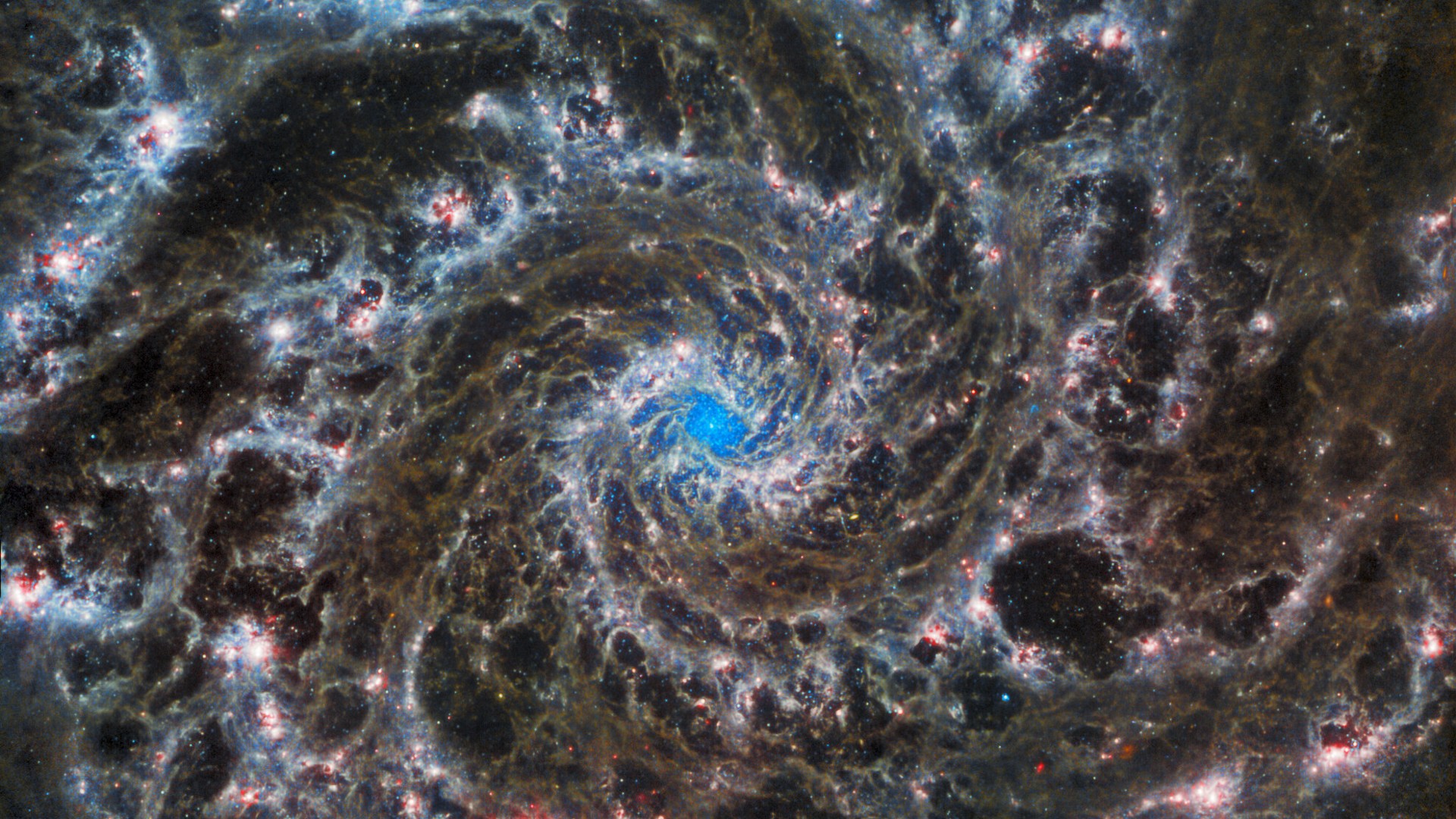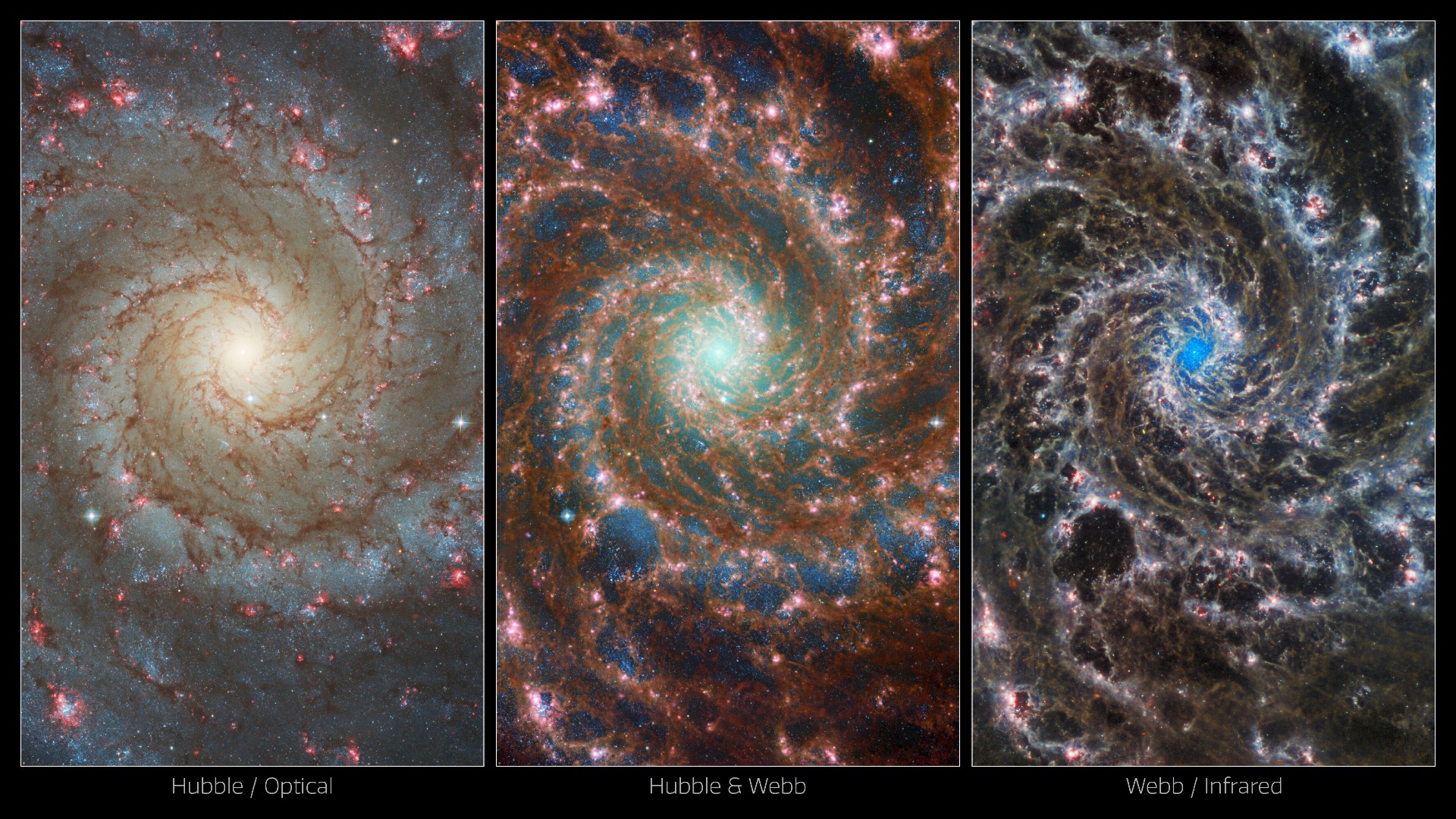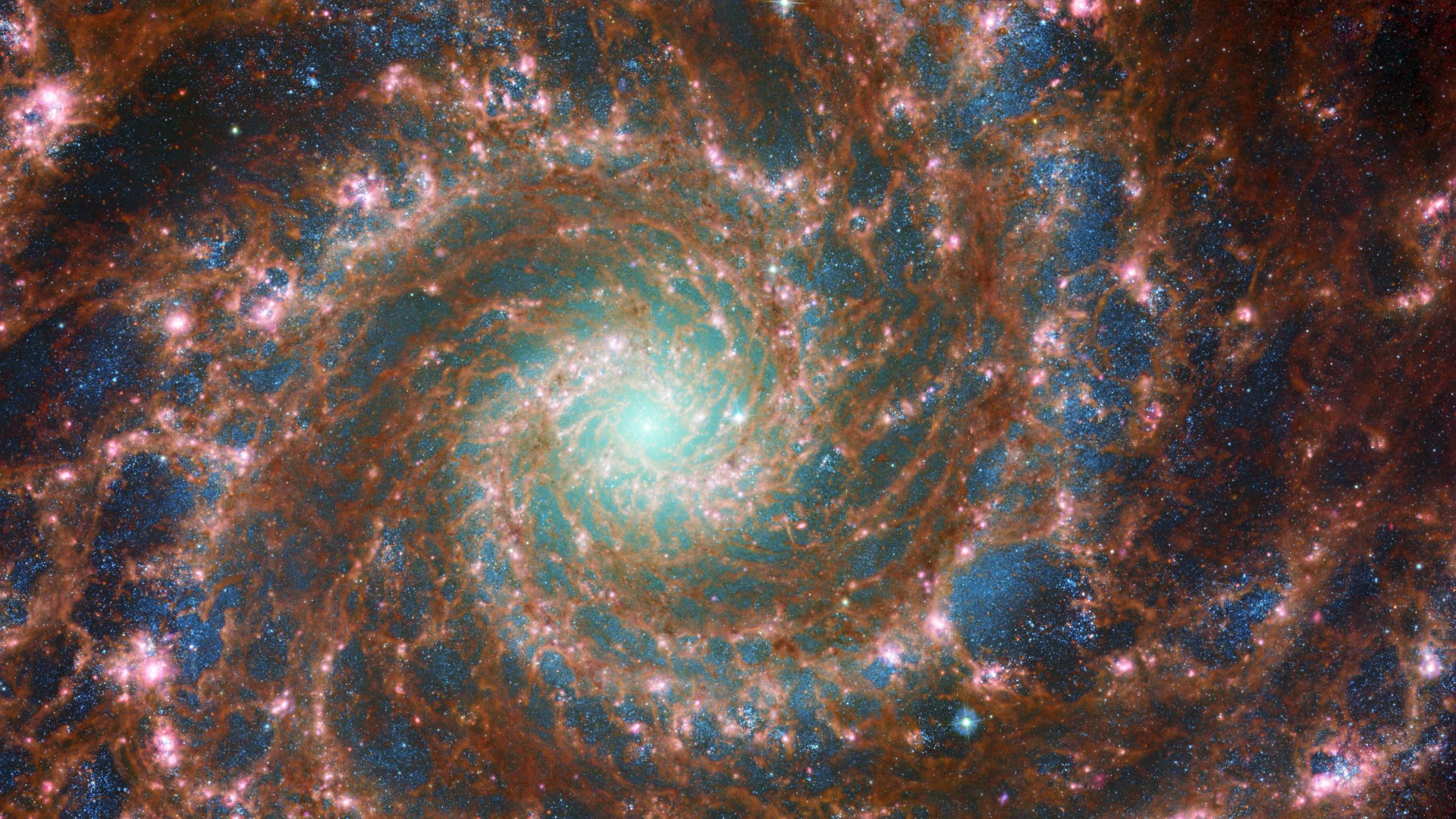James Webb telescope captures ghostly image of a celestial nautilus 32 million light-years from Earth
"Grand design" spiral galaxy shows the power of JWST's sharp new infrared observations.

The James Webb Space Telescope (JWST) has snapped a dramatic new image of a spiral galaxy that looks like a celestial seashell crafted from blue and pink gossamer filaments of gas.
The galaxy, called M74, resembles the seashell of a nautilus, whose spiral dimensions are thought to obey the Fibonacci sequence. Also known as the Phantom Galaxy, M74 is located about 32 million light-years from Earth in the constellation Pisces. M74 is known as a "grand design spiral" because of its prominent and well-defined spiral arms. It's also directly in Earth's line of sight, which makes the galaxy a popular target for astronomers studying the origin and structure of galactic spirals.
"Webb's sharp vision has revealed delicate filaments of gas and dust in the grandiose spiral arms which wind outwards from the center of this image," European Space Agency (ESA) representatives said in a statement. "A lack of gas in the nuclear region also provides an unobscured view of the nuclear star cluster at the galaxy's center."

The image comes from JWST's Mid-Infrared Instrument, which is sensitive to light in the mid-infrared region of the electromagnetic spectrum.
The new image is part of the Physics at High Angular resolution in Nearby Galaxies (PHANGS) survey, a long-running survey of stars, star clusters and dust within 19 galaxies. The goals of PHANGS are to find star-forming regions in those galaxies, measure the masses and ages of star clusters, and learn more about the small grains of dust drifting in interstellar space.
PHANGS has already imaged those 19 galaxies using the Hubble Space Telescope's Advanced Camera for Surveys, which makes JWST's images M74 perfect for an early comparison between the two space telescopes.

Hubble's view of M74 shows older, redder stars toward the center, younger and bluer stars in the galaxy's spiral arms, and stars forming in red bubbles. JWST's new sharp infrared observations are dominated by gas and dust within the galaxy's arms as well as the dense cluster of stars at its core.
Sign up for the Live Science daily newsletter now
Get the world’s most fascinating discoveries delivered straight to your inbox.
"This new image [of M74] has remarkable depth," ESA representatives said. "The red colors mark dust threaded through the arms of the galaxy, lighter oranges being areas of hotter dust." The young stars throughout the arms and the nuclear core are blue, while heavier, older stars toward the galaxy's center are shown in cyan and green. Star-forming regions are represented by pink bubbles. "Such a variety of galactic features is rare to see in a single image,” ESA representatives said.
The two space observatories' images were also merged to create a unique new composite image of M74 in both visible light (from Hubble) and infrared light (from JWST). This composite image "showcases the power of space observatories working together in multiple wavelengths," according to ESA.
Originally published on Live Science.

Jamie Carter is a freelance journalist and regular Live Science contributor based in Cardiff, U.K. He is the author of A Stargazing Program For Beginners and lectures on astronomy and the natural world. Jamie regularly writes for Space.com, TechRadar.com, Forbes Science, BBC Wildlife magazine and Scientific American, and many others. He edits WhenIsTheNextEclipse.com.









